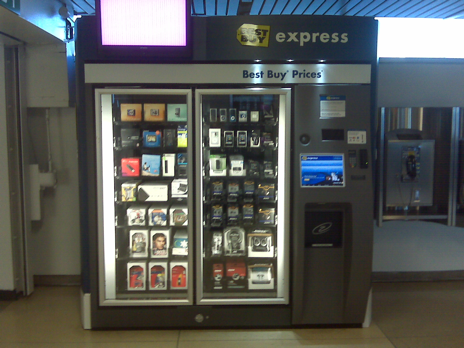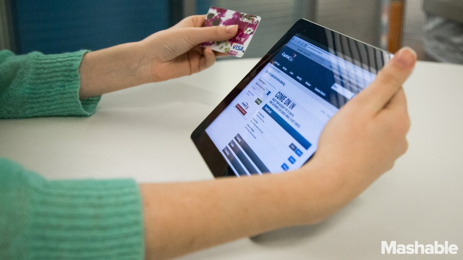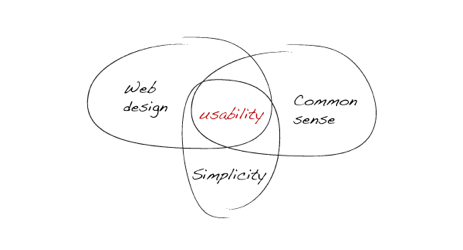What the Russian e-Commerce can learn from the US
 Bashny.Net
Bashny.Net

The conventional wisdom is that almost everything that is good in RuNet itself or it was copied from the West. E-commerce in this case is no exception. We Audiomanii with similar theses do not always agree, but we have to admit that sometimes learn from foreign colleagues have something.
What is the difference h4>
The idea of writing this text first visited me after visiting the exhibition and conference Internet Retailer Conference & Exhibition (IRCE) in Chicago. Some trends in eCommerce since changed, both in Russia and abroad, which, on the contrary, continue to exist without significant changes: I will try to highlight them, and also what are the essential differences in the development of the American and Russian markets E-commerce (it is important to note that we are talking about e-commerce in the implementation of the "physical" goods, because online stores selling electronic goods / services provided over the network, rightly make a separate category with its own trends and characteristics).
So, what is the Russian and US eCommerce is fundamentally different from each other? First of all - the online market turnover. As shown by statistics , according to this indicator, our country continues to significantly lag behind the market does not only in North America but also in Asia and Western Europe.
- If the US buyers choose online, mainly to save time, the Russian Internet buyer predominantly "save" money. This "trend" and pick themselves businessmen - while, on the western markets, companies are coming up with new client services, additional services and channels of distribution of goods in Russia eCommerce usually "compete" in an attempt to bring down prices.
- The main category покупателей are the age group of 35-44 people, at a young audience behind them at least 10%.
- A good half of all buyers of America is not interested in prices, they need the goods corresponding to the description, price and delivered on time. This is indicated by numerous polls.
- In comparison with the Russian penetration of advanced mobile technologies in the US is much higher, almost every American has a smartphone, with the exception, perhaps, only babies. Thereby (including) in the United States are actively using QR-codes and other relatively new (or just not good enough clamps on Russian soil) formats of interaction with the client.
- A huge number of non-core activities in the US eCommerce gives outsourcing while, as Russian companies are trying to do on their own - often because of the banal lack of quality services in the market.
- There is no "territorial" features and usability approaches to designing websites. As in many cases, the basis for successful solutions in this area is common sense, rather than a desire to do "everything they have."
- But what really should learn from their American colleagues, is their ability to work with content - primarily with video and e-mail newsletters.
Online vs Offline h4>
In the US, users choose online in the first place because it is quick. Online for Americans - no longer «option for shopping» (people choose and buy products online), while, as in Russia, many buyers still choose online and buy offline, or vice versa. At the same time American buyers almost do not pay attention to the difference between the prices of goods in online and offline - its virtually none. Make purchases on the Internet stimulates them, first, the belief that their order is sure to be processed, and secondly, strict adherence to delivery dates, as well as additional services and opportunities specific online brands.
In Russia, the situation is somewhat different: the main advantage of online shopping users see that they are cheaper, which is not always true. In this case, the buyer makes them "at your own risk," meaning that the application in the shop - sometimes just the beginning of a long journey to the desired product (which means that the buyer will have to spend a lot more time to get what you want: as compared American stores, and in comparison with the "traditional" retailing).
If two years ago the discussion about "Do I need a online reservations offline" in Russia were quite lively, at the present time, these conversations gradually subside: all come to the realization that the consumer in one store, and services and, accordingly, the purchase channels and receipt of the goods can be a lot - so sharply divide on- and offline, in most cases, not only incorrect, but simply bad.
From this we gradually move to the topic of "multi-channel" on eCommerce-markets of Russia and the United States. It is interesting that the West has historically divided the concept of «omnichannel» and «multichannel». For «multichannel» -system online and offline user-buyer - different people (even if in fact this is the same person), while «omnichannel» -variant takes into account this factor and uniquely identifies the buyer, regardless of whether how you made the purchase. As e-commerce began to develop in Russia later than in the US, phase «multichannel» -systems we (at least conceptually) happily slipped, and under the multi-channel we (Audiomaniya in particular) understand it «omnichannel» -formate.

«hybrid» (online, off-line) store in a US airport - another example of multi-channel commerce i>
Mobile Commerce h4>
Despite the fact that direct sales from mobile devices at the moment is accomplished not so much, part smartphone or tablet in the buying process is becoming more visible - before you buy anything from the usual desktop, the user can spend a lot of time studying the products from the catalog using a mobile device. This trend holds for both Russia and the United States, adjusted for the fact that in the United States users of smartphones and tablets is much greater than ours.
Forgetting the fans use a smartphone and a tablet to select the product or study available offers, without offering a convenient means of viewing your site from their mobile devices, the company "cuts" of the customer. It is known that if the buyer, for example, visited the site from your smartphone (for informational purposes) and received a negative experience of the user interaction with the site, the house with a laptop or PC (ie, more convenient and handy device for making purchases in network) it's about this site is unlikely to remember. In this case, smartphones - despite the fact that they never committed a large number of purchases - are an important channel for interaction with customers, you need to understand when assessing the audience and new clients.
And with web analytics in such cases often have problems: usually one and the same customer who visits a website with different devices, is perceived as a number of different users. The result is that customers who visited the site from a smartphone, using one or another channel of attraction, "gone" out of the store without buying anything, while in fact they are simply "smoothly moved" to another device.
This problem, we were puzzled as early as 2005, when finalized our own system of web analytics to take into account the possibility of visiting clients from different computers. Now Audiomanii this system is integrated into CRM, allowing customers we do not "lose" and a conversion to more accurately (but more on that we describe in detail in a separate topic).

New Directions h4>
Technology of QR-codes can not be called anything new, but so far in Russia it is considered more a toy than something really useful for business. In the US, the situation is different - there, QR-codes are used actively and "on purpose." For example, when in IMAX in Chicago did not work board with the schedule of sessions, the functions performed by the application to be accessed by users received by scanning the QR-code.
Yet, as one of the speakers IRCE:
As long as we do not start using the QR-code, they start to work. Blockquote>
Surprisingly little attention paid to the use western counterparts geoservices in e-commerce. Apparently, monetize this trend is not as easy as it seemed a few years ago, although users certainly very actively looking for shops nearby.
Content is King h4>
In the e-commerce quality content plays a key role. And one of the most popular of its type in the United States is now the video. Here is just a brief list of abstracts, regularly voiced by Western experts:
- Video increases the conversion of 50% and above.
Design and Usability h4>
It is no secret that many Russian companies are copying the design and functionality of the famous western stores. As practice shows, this is not always a good solution. Analyze trends in this area, of course, necessary, but in general, usability in the United States is not particularly different from usability in Russia.
The conference section of the audit sites comers. There's something I learned that there is no "American usability."

That you can really take note of, is a commitment to the ideology of Western colleagues adaptive design (in the west - RWD or Reactive Web Design). In addition, our Western colleagues believe the normal change of engine shop and appearance of the site every three years. It is suitable for all but the smallest players who are able to pull the project length 8-12 months and pay for it is a pleasure to $ 1 million.
Outsourcing h4>
USA - a paradise of outsourcing is not shy to involve experts who understand something better than you. This is especially important in e-commerce, where outside experts can solve such problems as "uplifting" abandoned baskets (with the percentage of turnover for performance), checking invoices from delivery services (for a percentage of the amount of money saved as a result of error detection) and even removing background with pictures of goods on the scale of several tens of thousands of images a month at least. And it is - not the limit. The exhibition featured a huge number of companies offering a variety of services, of which, as of the dice, you can collect a modern multi-site, regardless of the platform on which a shop.
Marketing h4>
Surprisingly, the American representatives e-Commerce-market is not doing SEO in the usual sense for all of us. Either this is not to say aloud. There is preached integrated approach, called Search Engines Marketing (SEM). The company invests in a variety of promotional services that offer search engines - a variety of formats and contextual advertising, and product placement in Google Shopping ... By the way, in contrast to Russia, where there are two of the most used search engines, and Google has won all States. Therefore, talk about SEO - is the talk usually about Google.
It is also worth noting that Google Merchant Center, with which you can show the trade context block in search results, and work in our country. But Russian online shopping somehow underestimate its effectiveness.

Another feature of the United States is very active use of e-mail marketing. Any American in his life gets out of the mailbox a couple of tons of advertising leaflets, so these letters in the mail as no surprise. And because they do read - first of all because they contain really interesting information (and not just a reminder about the next sale, as is often the case in Russia). It is very important to the proper segmentation of the audience and the opportunity to talk and offer her exactly what she may be interested in ...
Using global best practices, we have created a mini-email-marketing system, integrated into CRM, which allows you to target mailing vplod to one recipient. As a result, the distribution of Audiomanii are really effective. There was, for example, the following case: when Audiomaniya just started selling vinyl records, we decided to talk about this mailing list. At the same time we are well aware that a large part of the audience believes vinyl relic of the past and will not be in awe of such messages. To the news about the beginning of sales received by those who are interested in this as much as possible, we send letters only to those customers who have ever purchased from us turntables or accessories. Target audience took the news "a great success". Conversion was just a "space": 56% of people went on the links, the conversion was close to 10%. Percentage unsubscribing was 0, 29%.
Speaking about the US market not to mention Amazon. This once-bookstore is now the biggest Marketplace. Many Americans, when they are going to buy any product in the first place are just there.
Conclusions h4>
Despite the fact that some voiced in Topeka theses are certainly characteristic features of the market, of which you can still learn a lot of useful (detailed differences in the purchasing behavior of Russians and Americans within a particular category of goods / services can be traced back to the interactive charts here ). In my opinion, it is important to emphasize here and what point: the proportion of off-market continues now падение in favor of online players - for example, in the United States share the offline retail (excluding restaurants, gas stations and auto dealers) falls and she has overcome the 1% that retail - it is quite a serious figure.
Of course, in Russia with respect to the West, many processes are slowed down in time, but there is no doubt that competition in the field of e-commerce in RuNet will only grow. Therefore, you should now pay more attention to develop their own services (especially with respect to small and medium-sized players in the market) to introduce additional services on site, start to cooperate and to undertake joint action with the big brands and suppliers, not just to buy their goods, actively explore its audience and work for her. Engaged in the development of its brand. And most importantly - to realize that the competition - is not only a competition for the lowest price, and serious work, which in the Russian e-commerce is still very few people seriously puzzled.
This is because e-commerce market in Russia is just starting to grow up.
Everything is just beginning.
Source: habrahabr.ru/company/audiomania/blog/218255/
Tags
See also
"When I'm gone ..." A touching message from father to son for life.
Eastern wisdom — six books for those who do business with China
When I'm gone: the Best message of the father to his son for life
Where and what is taught in St Petersburg for free: 18 seats
Patsanmobili history of Russian tuning
Putin could destroy the US economy
Russian Union first launched with the equatorial launch site
Life American truckers (30 photos)
Eighth wonder: Russian radar
About deserved rating of Putin





















